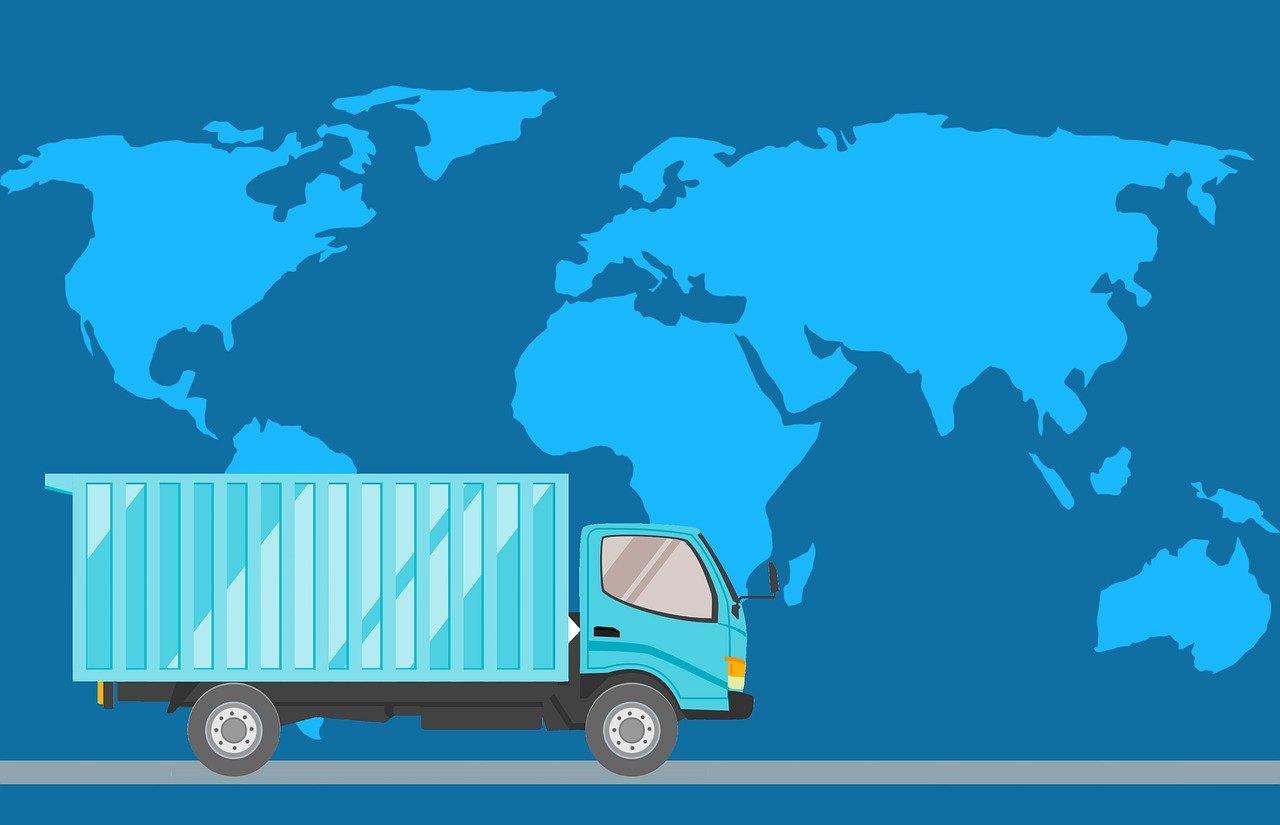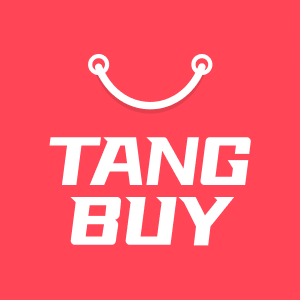Dropshipping fulfilment solutions for faster delivery in 2025

Want quicker delivery for your dropshipping business in 2025? You should use better fulfilment solutions. Automation helps orders move faster. Local warehouses keep products near your customers. Good supplier partnerships make shipping easier. > Always work on making your systems better and test new technology. This helps you stay ahead and make customers happy every time.
Key Takeaways
Customers want fast delivery now. Use local warehouses to help with this. Keep your warehouses updated to build trust with customers.
Pick the best fulfilment model for your business. You can choose in-house, 3PL, automated, or hybrid. This helps you ship faster and meet your needs.
Use automation and AI tools to process orders quickly. These tools help reduce mistakes. They also keep customers updated with tracking.
Work with suppliers who are reliable. They should give real-time stock updates. Their warehouses should be close to your main markets. This helps avoid delays.
Make sure your inventory is always synced. This stops you from selling items that are out of stock. It also makes customers happier.
Give clear and simple returns policies. Use local return addresses to make returns easy. This helps build customer loyalty.
Track important performance indicators like fulfilment time and accuracy. This helps you find problems and improve your service.
Stay flexible by trying new tools. Adapt to changes in the market. Grow your fulfilment by adding more warehouses and partners.

Delivery Speed Trends

Customer Demands
You probably notice that customers want their orders faster than ever. People do not like waiting for days or weeks. They want their products to arrive quickly, sometimes even the next day. If you run a dropshipping store, you must pay attention to these changes. Fast delivery can make your shop stand out. Slow shipping can push customers away.
Here are some things you should know about what customers expect now:
Customers expect fast shipping as a standard, not a luxury.
Many shoppers look for stores that offer next-day or two-day delivery.
People trust shops that keep them updated about their order status.
Customers prefer businesses that use local warehouses or fulfilment centres.
Tip: If you work with suppliers who have warehouses near your customers, you can cut down delivery times. This makes your service more reliable and keeps your customers happy.
You should also talk to your customers. Let them know when their order ships and when it will arrive. If there is a delay, tell them right away. Honest communication builds trust and helps you keep loyal buyers.
Market Competition
The e-commerce world is busy. Many shops compete for the same customers. You need to offer something special to win their attention. Fast delivery is one way to do this. If you deliver quicker than your rivals, you get more sales.
Let’s look at how competition affects delivery speed:
Big brands like Amazon set high standards for delivery. Shoppers expect small stores to match these speeds.
Dropshipping businesses must find ways to keep up. You can use fulfilment centres, local warehouses, or partner with fast suppliers.
Shops that offer slow shipping lose customers to faster competitors.
You should watch what other shops do. If they start offering same-day delivery, you might need to do the same. Stay flexible and ready to change your strategy. Use technology to track orders and manage stock. This helps you react quickly and keep up with market trends.
Note: Fast delivery is not just about speed. It shows you care about your customers and want to give them the best experience.
If you focus on delivery speed, you can grow your dropshipping business and keep your customers coming back.
Dropshipping Challenges

Bottlenecks
Bottlenecks can slow your dropshipping shop. These are places where orders get stuck. Sometimes, you wait for suppliers to check stock. Other times, order processing is slow. Manual systems can cause missed orders or mistakes. Talking with suppliers can also take too long.
Some bottlenecks you might face are:
Waiting for suppliers to reply
Mistakes from typing orders by hand
Slow updates from fulfilment centres
Bad communication with suppliers
Tip: Automated tools can help you fix bottlenecks. These tools make order processing faster and keep things tidy.
Inventory Issues
Inventory problems can make running your shop hard. You might sell something that is not in stock. This makes customers upset and you lose sales. Sometimes, suppliers do not update stock quickly. Popular items can run out faster than you think.
Here is how inventory issues can hurt your shop:
Problem | Impact on You |
|---|---|
Out-of-stock products | Lost sales, refunds |
Slow stock updates | Delayed orders |
Overselling | Customer complaints |
Poor forecasting | Missed opportunities |
You can stop many inventory problems by syncing your shop with supplier systems. Automated inventory management helps you see stock levels right away. You can also use more than one supplier to keep products in stock.
Shipping Delays
Shipping delays annoy you and your customers. You want orders to arrive fast, but many things can slow them down. International dropshipping has even more problems. Global events, higher fuel costs, and customs rules can all cause delays.
Here are some reasons for shipping delays:
Higher fuel costs and inflation slow down carriers
Customs changes and new trade rules slow clearance
Bad weather and not enough workers slow carriers
New carriers, duties, and taxes can confuse people
Note: Shipping is always changing. You need to watch for problems and change your plan to avoid delays.
If you want happy customers, track shipments and tell buyers about delays. Fast updates build trust and help you set clear expectations.
Dropshipping Models
In-House
You might want to keep everything in your own hands. In-house fulfilment means you store, pack, and ship all your products yourself. You control every step. This model gives you full power over your stock and how fast you send out orders.
If you have your own warehouse, you can pack orders as soon as they come in. You do not wait for anyone else. You can check your stock levels any time. You can also make sure every package looks just right.
But in-house fulfilment takes a lot of work. You need space for your products. You need staff to pick and pack orders. You must handle returns and customer questions. If you get lots of orders, things can get busy fast.
Tip: In-house works best if you sell a small range of products or want to offer a special unboxing experience.
3PL
A third-party logistics provider (3PL) takes care of storage, packing, and shipping for you. You send your products to their warehouse. When a customer buys something, the 3PL packs and ships it. This model saves you time and lets you focus on growing your shop.
3PLs often have warehouses in many places. They can store your products close to your customers. This helps you offer faster delivery. Some 3PLs use smart systems to pick the best warehouse for each order.
Here’s a quick look at how fast some top 3PLs deliver:
3PL Provider | Delivery Speed Benchmark | Notes |
|---|---|---|
Tangbuy | Competitive global delivery performance | Tailored for dropshipping with real-time inventory sync, reliable tracking, bulk dispatch from China and selected overseas warehouses. Supports flexible MOQ, branded packaging, and special-category products. |
ShipBob | Achieved when the correct warehouse location is selected relative to the shipping area. | |
Amazon FBA | Among the fastest in the US, especially for Prime members | Limited to Amazon marketplace; uses advanced technology including drone delivery trials. |
If you want to compete with big brands, a 3PL can help you match their speed. You do not need to run your own warehouse. You can also scale up quickly if your shop grows.
Note: Not all 3PLs are the same. Some offer better tech and more warehouse locations. Always check what each provider can do for your shop.
Automated
Automated fulfilment uses software and machines to handle orders. You connect your shop to an automated system. When someone buys a product, the system sends the order to the warehouse. Robots or staff pick and pack the order. The system updates your customer with tracking details.
This model cuts out manual work. You do not need to type in orders or send emails to suppliers. Everything happens in real time. Automated fulfilment helps you avoid mistakes and speed up shipping.
Some automated systems work with local warehouses. They choose the closest one to your customer. This means your orders arrive faster. You can also use bulk ordering to keep popular products in stock.
Automated fulfilment is great if you want to save time and reduce errors. It works well for shops with lots of orders or many different products.
You can mix automated systems with other models. For example, you might use automation with a 3PL or your own warehouse. This gives you more control and flexibility.
Hybrid
You do not need to choose only one fulfilment model. The hybrid way lets you use more than one method. You might keep some products in your own warehouse. You can use a 3PL for other items. You could add automated systems to make orders move faster. This helps you match delivery speed to what your customers want.
Imagine you sell both fast and slow-selling products. You can store popular items in a local warehouse. This means you can ship them quickly. For less popular things, you can let a supplier send them straight to your customer. Mixing methods saves money and still gives fast delivery.
Here are some ways a hybrid model helps you:
You can keep best-sellers in local warehouses. This makes delivery quicker and keeps customers pleased.
You can order popular products in bulk and store them near your main markets.
You can use 3PLs for orders going abroad or for products you do not want to handle yourself.
You can add automation to manage orders and stock in all your sales channels.
Tip: The hybrid model is flexible. You can change your setup as your business grows or if your customers want something different.
A hybrid approach helps you during busy times. If you get lots of orders at holidays, you can use extra fulfilment partners. You do not need to worry about running out of space or staff.
Here is a table showing how the hybrid model compares to other choices:
Model | Delivery Speed | Flexibility | Cost Control | Best For |
|---|---|---|---|---|
In-House | Fast (if local) | Low | Medium | Small range, custom packaging |
3PL | Fast (multi-warehouse) | Medium | Medium | Scaling, multiple regions |
Automated | Very fast | Medium | High | High volume, many SKUs |
Hybrid | Fastest (if optimised) | High | High | Growing, diverse product range |
You can see the hybrid model is the most flexible. You can always change your setup to suit your needs. Many Dropshipping businesses now use a hybrid approach. It helps you beat the competition and deliver orders faster.
Technology in Fulfilment

AI Systems
You see artificial intelligence everywhere now, even in dropshipping. AI systems help you manage orders, predict demand, and spot problems before they happen. If you use AI, you can make smarter decisions about stock and shipping. AI looks at your sales data and tells you which products sell best. It can also warn you when something might run out soon.
AI helps you avoid mistakes. It checks customer addresses and flags anything that looks wrong. You do not need to spend hours looking at spreadsheets. The system does the hard work for you. Some platforms use AI to match orders with the best warehouse or supplier. This means your customers get their orders faster.
AI is like having a smart assistant. It works all day and never gets tired. You can trust it to keep your shop running smoothly.
Automation
Automation changes the way you handle fulfilment. You do not need to type in every order or send emails to suppliers. Tools like AutoDS do this for you. When a customer buys something, the system places the order automatically. You save time and avoid mistakes.
Here’s how automation tools like AutoDS help you:
You cut fulfilment time from 10-20 minutes per product to just seconds.
The software places orders using your buyer accounts or its own, keeping your accounts safe.
Tracking details go straight to your customers, so they always know where their order is.
Automation stops errors like wrong addresses or missing details.
You can fulfil many orders at once, which saves you lots of effort.
Your shop runs faster and more accurately, so customers get their products quickly.
If you want to grow your business, automation is a must. You spend less time on boring tasks and more time finding new products or talking to customers. Automation also helps you keep up with busy times, like holidays or sales events.
Tip: Automation tools make your life easier. You get fewer complaints and happier customers.
Tracking Tools

Tracking tools help you and your customers see where each order is. You do not need to guess if a package will arrive on time. The system updates you with every step, from packing to delivery. Customers like to know what is happening with their orders. If you give them tracking links, they feel more confident buying from you.
Some fulfilment platforms send tracking numbers automatically. You do not need to copy and paste anything. The system does it for you. Real-time tracking means you can spot delays early and fix problems before customers get upset.
Tracking Tool Feature | Benefit for You | Benefit for Customers |
|---|---|---|
Real-time updates | Spot delays quickly | Know delivery status |
Automatic emails | Save time | Get instant notifications |
Order history | Track performance | Check past orders |
If you use good tracking tools, you build trust with your buyers. They know you care about their experience. You also spend less time answering questions about shipping.
Note: Fast, clear tracking keeps everyone happy and helps you stand out from other shops.
Multi-Warehouse
You want your dropshipping shop to send orders fast. It does not matter where your customers live. Using more than one warehouse helps you do this. You do not keep all your products in one place. You spread them out in different warehouses in different areas. This way brings lots of good things and changes how you send out orders.
When you use many warehouses, your products are closer to your buyers. Parcels travel shorter distances. Orders arrive faster. You also pay less for shipping. You skip long customs checks and avoid delays from sending things overseas.
Here is why using more warehouses works well for dropshipping:
You save money by sending parcels from the closest warehouse.
Delivery is quicker because products do not travel far or cross borders.
If one warehouse has a problem, you can still sell from others.
You can keep popular items in places where people buy them most.
You do not need every product in every warehouse. Slow or seasonal items can still use dropshipping. This keeps costs low and your shop flexible.
You can check costs and profits for each warehouse. This helps you see which places work best.
Technology and automation help you manage stock in all warehouses at once.
Tip: Use smart software to keep your inventory updated in every warehouse. This stops you from selling too much and keeps your stock right.
Imagine you sell trainers. White trainers sell best in London. Blue trainers are popular in Manchester. With more warehouses, you send more white trainers to London and more blue ones to Manchester. Customers get what they want faster. You do not waste money sending products across the country.
A multi-warehouse plan helps you during busy times like Black Friday or Christmas. If one warehouse runs out, another can send the order. You keep customers happy and do not lose sales.
Note: Managing many warehouses may sound hard, but new fulfilment platforms make it easy. Many tools show all your stock in one place. You can move products between warehouses with just a few clicks.
If you want your dropshipping shop to grow and reach more people, using more warehouses gives you speed, flexibility, and control. Your customers will see the difference—and so will your profits.
Regional Strategies
Local Warehousing
You want your customers to get their orders fast. Local warehousing helps you do this. You keep products in warehouses close to your buyers. This makes delivery much quicker. For example, if your shop is in the US, you use US warehouses. Customers get parcels in three to five days. This is much faster than sending from overseas.
Local warehouses help you skip long customs checks. You also avoid delays from international shipping. Your products stay near your main markets. You can pack and send orders right away. Many fulfilment platforms use smart order routing. The system picks the closest warehouse for each order. Customers get items faster. You get fewer complaints.
Fast delivery helps your shop stand out. Customers remember when their orders arrive quickly.
If you sell popular products, stock them in more than one warehouse. This way, you always have items ready to ship. You do not worry about running out or missing sales during busy times.
Compliance
You must follow the rules in every country or region you sell in. Compliance means you obey laws for shipping, taxes, and product safety. If you ignore these rules, you might get fined or lose your right to sell.
Each country has its own rules for imports, labelling, and returns. You must check these before you start selling. Some fulfilment partners help with compliance. They know local laws and can guide you.
Always check if your products need special certificates.
Make sure your packaging meets local standards.
Register for taxes if you sell a lot in one country.
Tip: Good compliance keeps your business safe and builds trust with your customers.
Local Carriers

Local carriers help make delivery fast. These are delivery companies that work in your customer’s area. They know the roads and deliver parcels quickly. Using local carriers means you avoid long waits with big couriers.
Many fulfilment centres work with trusted local carriers. They hand over parcels as soon as they are packed. Local carriers often give better tracking and customer service. Buyers can see where their order is at every step.
Here is why local carriers help your dropshipping business:
Benefit | What it Means for You |
|---|---|
Faster delivery | Happier customers |
Better tracking | Fewer support questions |
Local knowledge | Fewer lost parcels |
If you want to impress customers, choose fulfilment partners who use strong local carrier networks. This small step can make a big difference in delivery speed and customer happiness.
Best Practices
Supplier Management
You want your dropshipping business to run smoothly. Good supplier management helps you do this. Start by choosing reliable suppliers. Do not pick the first one you find. Take your time and check their reviews. Ask other shop owners about their experiences. A good supplier ships orders quickly and keeps you updated.
Work with more than one supplier. If one runs out of stock, you can use another. This keeps your shop running even during busy times. Local suppliers help you deliver faster. They store products closer to your customers. You cut down on shipping time and avoid customs delays.
Here are some tips for managing suppliers:
Vet every supplier before you start working with them.
Build strong relationships. Talk to your suppliers often.
Use suppliers with warehouses near your main markets.
Check if they offer real-time stock updates.
Always have a backup supplier for popular products.
Tip: Automated systems help you manage many suppliers at once. You can track orders, check stock, and switch suppliers with just a few clicks.
Inventory Sync
Keeping your inventory in sync is key. You do not want to sell products that are out of stock. This upsets customers and hurts your reputation. Use software that connects your shop to your suppliers’ systems. This way, your stock levels update in real time.
Automated inventory sync saves you time. You do not need to check stock by hand. The system updates your shop every time a supplier adds or removes products. You can see what is available at a glance.
Here is how inventory sync helps you:
Benefit | What It Means for You |
|---|---|
Real-time updates | No more overselling |
Fewer mistakes | Happier customers |
Less manual work | More time for marketing |
Better planning | Fewer missed sales |
Note: Always test your inventory sync before you go live. Make sure it works with all your suppliers.
Customer Updates
Customers want to know what is happening with their orders. You should keep them updated at every step. Send an email when you receive their order. Let them know when you ship it. Share tracking numbers as soon as you have them.
Clear updates build trust. If there is a delay, tell your customer right away. Do not wait for them to ask. Honest communication makes customers feel valued.
You can use automated tools to send updates. These tools send emails or texts without you lifting a finger. Your customers stay informed, and you save time.
Send order confirmation right after purchase.
Share shipping and tracking details as soon as possible.
Update customers if there are any delays.
Ask for feedback after delivery.
Customers remember good service. Fast, clear updates turn first-time buyers into loyal fans.
Returns

Returns are part of every dropshipping business. You cannot avoid them, but you can manage them well. If you set up a clear and simple returns process, you make life easier for yourself and your customers. People feel safer buying from you when they know they can return items without hassle.
Why returns matter in dropshipping
You might think returns are just a headache. In truth, they give you a chance to show great service. If you handle returns quickly, customers trust you more. They are more likely to buy from you again. A smooth returns process can even turn an unhappy customer into a loyal fan.
Common returns challenges
You face some special problems with returns in dropshipping:
Products often ship from overseas, so returns can take a long time.
Some suppliers do not accept returns or make the process hard.
Shipping costs for returns can be high.
Tracking returned items can get confusing.
Tip: Always check your supplier’s returns policy before you list a product. If they do not accept returns, you need to decide if you want to sell that item.
How to make returns easy for your customers
You want your returns process to be simple and clear. Here are some steps you can follow:
Write a clear returns policy on your website. Use simple words. Tell customers how long they have to return an item and what steps they need to take.
Offer free returns if you can. This builds trust and can increase sales.
Use local return addresses when possible. Some fulfilment partners offer this service. Customers send items to a local warehouse, not overseas.
Automate your returns process. Use software that lets customers request a return online. The system can send them a return label and update you at each step.
Communicate at every stage. Let customers know when you receive their return and when you process their refund.
Returns process at a glance
Step | What You Should Do |
|---|---|
Customer requests | Respond quickly, give clear steps |
Item returned | Track the parcel, confirm receipt |
Refund or exchange | Process fast, update the customer |
Note: If you make returns easy, customers will remember your shop. They will feel safe buying from you again.
Extra tips for smooth returns
Work with suppliers who have warehouses in your main markets. This makes returns faster and cheaper.
Keep your returns policy up to date. Review it every few months.
Use feedback from returns to spot product problems. If many people return the same item, check for quality issues.
Returns do not have to be a problem. If you plan ahead and use the right tools, you can turn returns into a way to build trust and grow your dropshipping business.
Platforms Comparison
When you pick a fulfilment platform, you want one that fits your shop and helps you deliver fast. Let’s look at some of the top choices for dropshipping in 2025. You will see how each platform stands out and what you can expect.
Features
Each platform gives you different tools to make your life easier. Some focus on automation, while others help you find suppliers or manage warehouses. Here’s a quick look at what you get:
Platform | Automation | Local Warehouses | Product Sourcing | Real-Time Tracking | Bulk Ordering |
|---|---|---|---|---|---|
Tangbuy | ✅ | ✅ | ✅ | ✅ | ✅ |
Zendrop | ✅ | ✅ (US/EU) | ✅ | ✅ | ✅ |
Spocket | ✅ | ✅ (US/EU) | ✅ | ✅ | ❌ |
ShipBob | ✅ | ✅ (Global) | ❌ | ✅ | ✅ |
Omnidrop | ✅ | ✅ (US/EU/Asia) | ✅ | ✅ | ✅ |
HyperSKU | ✅ | ✅ (Global) | ✅ | ✅ | ✅ |
Sunrise Wholesale | ✅ | ✅ (US) | ✅ | ✅ | ❌ |
Tip: If you want to automate most of your work, look for platforms with strong automation and real-time tracking. This saves you time and keeps your customers happy.
Performance
You care about how fast your orders reach your customers. Some platforms have more warehouses, so they can ship quicker. Others work with local suppliers to cut down delivery times. Here’s what you can expect:
Tangbuy:Offers reliable dropshipping with factory-direct sourcing. Fast processing from China with flexible MOQs and full tracking. Best suited for sellers needing consistent fulfillment and support for niche or restricted products.
Zendrop: Delivers in 2-5 days for US and EU orders. Great for fast shipping.
Spocket: Focuses on US and EU suppliers. Most orders arrive in 2-7 days.
ShipBob: Has a global warehouse network. You get 2-day shipping in many regions.
Omnidrop: Offers fast fulfilment in the US, EU, and Asia. Delivery times range from 2-8 days.
HyperSKU: Ships worldwide. Delivers in 3-8 days to main markets.
Sunrise Wholesale: Best for US orders. Delivers in 2-5 days.
If you want to impress your customers, choose a platform with warehouses near your main markets. This helps you avoid long waits and keeps your shop ahead of the competition.
Integration
You want your fulfilment platform to work with your shop. Most top platforms connect with Shopify, WooCommerce, and other e-commerce tools. Some even let you manage everything from one dashboard.
Tangbuy: Seamlessly integrates with Shopify, WooCommerce, and other major platforms. Product syncing and order tracking are supported through an easy-to-use dashboard.
Zendrop and Spocket: Easy to connect with Shopify and WooCommerce. You can import products with one click.
ShipBob: Works with many e-commerce platforms. You get a dashboard to track orders and stock.
Omnidrop and HyperSKU: Offer strong integration with Shopify, WooCommerce, and more. You can sync inventory and automate orders.
Sunrise Wholesale: Connects with Shopify and eBay. You can manage products and orders in one place.
Note: Before you choose, check if the platform supports your shop. Good integration saves you time and stops mistakes.
Choosing the right fulfilment platform helps you deliver faster, manage your shop better, and keep your customers coming back. Try a few and see which one fits your business best!
Continuous Optimisation
KPIs
To keep your dropshipping business running well, you must watch the right numbers. These numbers are called key performance indicators, or KPIs. KPIs help you see how your fulfilment is working. You can find problems early and fix them before customers get upset.
Check how long it takes to send out orders. This is called order fulfilment time. It means the time from when someone buys to when you ship their order. If you ship fast, customers are happy. Also, look at shipping time to the customer. If parcels arrive quickly, people trust your shop more.
Order accuracy rate is another important KPI. You want every order to be correct. Mistakes cause returns and bad reviews. Try to keep your accuracy above 99%. Customer satisfaction scores and reviews show what buyers think of your service. If you see lots of refunds or returns, there may be problems with product quality or packaging.
Here’s a table to help you understand some key KPIs:
KPI | What It Measures | Why It Matters | How to Optimise |
|---|---|---|---|
Order Fulfilment Time | Time from order to shipment | Faster fulfilment = happy customers | Automate orders; choose fast suppliers |
Inventory Accuracy Rate | Stock availability accuracy | Prevents overselling | Sync inventory; regular audits |
Shipping Time to Customer | Time from dispatch to delivery | Direct impact on satisfaction | Use local suppliers; tracking updates |
Order Accuracy Rate | Correctly fulfilled orders | Avoids returns and complaints | Precise transfers; packing standards |
On-time Delivery Rate | Orders delivered on time | Builds trust | Track courier performance |
You can also track customer satisfaction scores, net promoter scores, return rates, repeat purchase rates, and support response times. These KPIs help you see where you can do better.
Adapting
You must stay flexible in dropshipping. The market changes fast. New technology comes out all the time. To keep up, you need to change your fulfilment process. Watch your KPIs and listen to your customers. If delivery times get longer, try new suppliers or use local warehouses.
Automation tools help you react faster. You can set up systems that change stock levels or switch suppliers automatically. If you see more returns, check your product quality or packaging. You might need to update your returns policy or give better support.
Tip: Always test new tools and methods before using them for every order. Small changes can make a big difference.
Scaling
When your shop grows, you need to scale your fulfilment. More orders mean more work. You cannot do everything by hand. Use automation to handle lots of orders. Connect your shop to fulfilment platforms that manage stock, orders, and shipping for you.
You can add more warehouses in new places. This helps you deliver faster and reach more customers. Work with extra suppliers to keep popular products in stock. Make sure your systems can handle busy times like holidays or sales.
Here are some ways to scale your fulfilment:
Use multi-warehouse management software.
Hire staff or work with 3PL partners.
Automate order processing and inventory sync.
Monitor KPIs to spot bottlenecks early.
Keep your customer support team ready for more questions.
Scaling your dropshipping business takes planning. If you optimise and adapt, you can grow without losing speed or quality.
You can now make your dropshipping delivery faster in 2025. Use automation to help your orders move quickly. Store products in local warehouses near your buyers. Work closely with your suppliers to ship orders on time. Try out new technology and look for better ways to work. If you want your dropshipping shop to do well in the future, check your fulfilment process now. Even small changes can really help your customers.
FAQ
How can you make dropshipping delivery faster in 2025?
You can use local warehouses to store products near buyers. Automate your order process so orders move quickly. Work with reliable suppliers who ship on time. Try out new technology to help your shop run better. Always look for ways to make your system faster.
Do you need to use more than one warehouse?
Yes, using more than one warehouse helps you send orders faster. You can keep products closer to your customers. This means parcels travel less and arrive sooner. Your customers will be happier with quick delivery.
What is the best way to handle returns in dropshipping?
Make a clear returns policy that is easy to follow. Use local return addresses if you can. Tell customers how to send items back. Fast and simple returns help people trust your shop. This makes them want to buy from you again.
Which fulfilment platform should you choose?
Pick a platform that fits what your shop needs. Look for automation and local warehouses. Make sure it works easily with your store. Platforms like Zendrop, ShipBob, and HyperSKU have good features for fast delivery.
How do you keep your inventory up to date?
Use automated tools to sync your inventory. These tools link your shop to your suppliers. You always know how much stock you have. This stops you from selling things that are out of stock.
Can you offer next-day delivery with dropshipping?
You can offer next-day delivery if you use local warehouses and fast carriers. Not every product or place can get next-day shipping. Check with your fulfilment partners to see what is possible.
What should you do if your supplier causes delays?
Contact your supplier as soon as you notice a delay. Ask them for updates and ways to fix the problem. If delays keep happening, use a backup supplier. Always tell your customers about any changes.

TangBuy: A Smarter Way to Dropship in 2025
If you're looking to stay competitive with dropshipping in 2025, speed and trend-awareness are key. TangBuy helps you stay ahead with real-time product trends, fast fulfilment, and factory-direct sourcing. With over 1 million ready-to-ship items, 24-hour order processing, and seamless Shopify integration, TangBuy makes it easier to test, scale, and succeed in today's fast-moving eCommerce landscape.
See Also
Top Dropshipping Concepts To Earn Profits In 2025
Comparing Dropshipping And Amazon FBA Profitability In 2025
Complete Guide To Starting A Dropshipping Venture In 2025

